Pimples on the scalp can cause a lot of discomforts, make you want to scratch and pop them. What is their meaning? What causes acne on hairline? How do you get rid of scalp pimples, zits, and bumps? Many, many things can cause painful on both adult and baby scalps. Here’s a complete list of causes, their remedies, and treatments to remove pimples in hair.
What most people describe as a pimple on the scalp, head or hairline can be a symptom of many things. Shampoos, dandruff, lice, allergy, ringworm, shaving, psoriasis and many others could be the source of zits, acne or bumps on the scalp.
While in most cases, small bumps on your head will go away on their own, sometimes you might get scalp pimples that won’t heal or won’t go away for a long time – months and even years. This could mean serious problems such as cancer, hair loss, baldness and much more as you will learn below.
Pimples on scalp meaning, what are they, symptoms and excessive pimples
When you have long hair or dreadlocks, the formation of pimples on the head can mean a source of a lot of discomforts. Worse if it has no head and it is painful. So, what is a zit on scalp? What symptoms will you see if you have them under hair?
- A small raised bump-growth forms on the skin due to any one of the causes discussed below. It might be red, yellow or white in color or by description.
- Some people may feel the scalp pimple-causing headaches or pain. Pimples on ears, face, neck and back hurt because of the attempt to pop or scratch it.
- Excessive pimples or rash on your head could be head rash especially if you covered your head with a plastic cap. It could also mean allergies, or you are reacting to shampoo, relaxer, conditioner or other hair products you are using.
Green pimples with pus on the scalp
Light green pimples on the head, hairline or scalp can mean something else, more than just a normal zit or bump under hair. According to WiseGeek as well as Acne.org, green pimples on the skin or scalp are associated with “staph infection or Pseudomonas aeruginosa.”
When a white pimple turns green, it should be cause for concern. The right thing to do is to see a dermatologist and not to start popping it. The green color is due to the presence of a type of antibacterial proteins in the zit. Mostly, infected pimples will turn greenish, or may produce green pus. So, what are the causes of pimples on scalp?
What causes pimples on scalp? Why do you get pimples on your scalp?
Scalp acne, zits, bumps, and pimples are far less common compared to acne that attacks other parts of the body such as the back, face, and shoulders.
Causes of scalp pimples vary widely and are quite many. Some of them might be harmless, while others may point to an underlying sickness or health condition that might need to be seriously addressed.
Why do I get pimples on my scalp? If you have been asking this question, the answer might not be a single one unless you pinpoint the causes from the ones described below. For women, it could be hormonal imbalances, stress or even hair extensions. Let’s explore the 15 causes of pimples on the scalp and hairline.
1. Scalp folliculitis
Scalp folliculitis manifests itself as inflamed pimples on the head. It is caused by “is damage to the hair follicle” which is followed by the infestation of mites, bacteria or fungus. [Source – SkinCare News.] If you have an excessively oily scalp, you are likely to get scalp folliculitis more often.
Symptoms of small scalp bumps known as folliculitis may range from just mild and superficial pimples to severe cases like boils, scarring and the destruction of hair follicles.
If it gets to this condition, make sure you see a doctor as soon as possible for treatment. However, it is expected that the mild case of scalp zits or acne, or scalp whiteheads will clear itself with time. People with diabetes are also at a higher risk of developing folliculitis.
2. Extensions and braids may cause pimples on your scalp
Braids and hair extensions could also be the reason for those painful and itchy pimples in your hair. According to Health Hype, hair loss, sores, blisters, and bumps are quite common with the use of extensions.
Dr. Weaver, answering a question on his website notes that painful pustules can form on your hairline if you wear hair extensions for a long time, maybe months or years. These could be caused by a reaction to the glue from the weaves, braids, and extensions.
3. Hormonal changes and pimples on scalp during pregnancy, before period, menopause
There are times when hormonal changes happen in the body and cause a lot of changes in the skin. These changes mostly occur in menopause, before or during a period or in early pregnancy. According to WebMD, at least one woman out of two develops acne when pregnant.
The very reason why you get head pimples during these times is that there is increased hormone levels in the body. In response, the skin increases its production of natural oils. You are likely to experience scalp acne flare-ups just at the start of your menstrual cycle, first trimester of pregnancy or at the onset of menopause.
4. Oily scalp and dry skin cause acne
Do you have oily hair or oily skin? Research has shown that people who get pimples more often have dry oily skins. Mostly, when hair gets oily after a day or just a few hours, it causes clogged pores. The skin naturally produces sebum.
For someone with an excessively oily skin, the oil glands secrete too much oil, which if not treated or cleaned well and more regularly, will cause acne, blackheads, and pimples. The same occurs with those pimples under your hair.
5. Eczema, psoriasis cause crusty pimples in hair
Skin conditions such as psoriasis and eczema or atopic dermatitis are known to show as inflamed pimples on the scalp. Eczema has symptoms such as dry itchy skin may show on the scalp due to seborrheic dermatitis, which is also called dandruff. In babies, cradle cap is the term used.
The root cause of eczema pimples under hair include overproduction of sebum that ends up as greasy and crusty scales. According to Everyday Health, this encourages overgrowth of certain skin fungus cells. The resultant pimples are likely to form irritation and sometimes scabs on scalp.
6. Small pimples on scalp celiac
Celiac disease also called dermatitis herpetiformis (DH) may also cause small pimple pustules or dots on the scalp. These dots may also break out recurrently on other parts of the skin such as elbows, knees, back, shoulders and buttocks.
- If you find “Clusters of small blisters that persistently break out on” your scalp, you should see a doctor for proper diagnosis (biopsy) and treatment. [Source – Celiac Disease, NIH]
7. Stress and acne on scalp
Many scalp problems such as hair loss, bumps, zits, dandruff, and itchiness are caused by stress. According to Mountain Auburn Hospital, flaking, itching, pimples and crusting on the scalp are more often a result of either stress or a condition called lichen planus.
- “This condition appears more often during stress, fatigue, or exposure to medicines and certain chemicals.”
8. Shaving bumps on the scalp and from relaxer
If you have recently shaved your head or have used a relaxer, it could be the reason for the scalp pimples. Razor bumps occur if you don’t use clean razors, and may also be caused by poor shaving technique or ingrown hair. In order to prevent the problem, you must know how to get rid of razor burn when shaving or getting a haircut in order to reduce the effects, which might include dark scars and spots on your hairline.
Hair relaxers can also cause burns on the scalp, which will show symptoms such as pimples. Your skin could also be reacting to the relaxer. Ensure that you use the right relaxer, with the right pH to avoid burns and rashes on the scalp.
9. Scalp zits from dairy products, foods, milk and cystic acne on scalp
What is the connection between dairy products and acne or zits? Does milk cause acne on the scalp, face, neck and other parts of the body? According to Clear Skin Forever, most dairy products contain hormones that support growth, as well as other inflammatory substances that are likely to clog your pores. When your scalp pores are clogged, they form acne pimples.
- A certain user on Google Answers complained of scalp sores and pimples at the back of the head and neck noted that she eliminated dairy products from her diets and foods and ended up with the pimples going away after a few weeks – on their own.
10. Pimples on the scalp after exercise and from sweating
Hair loss from scalp sores usually starts out as pimple heads due to hormone imbalances in the body. Lack of exercise is one of the main causes of this, and especially when coupled with stress as we have already discussed above.
Stubborn red bumps also have something to do with excessive sweating after exercise. According to NewsMax, excessive sweating and oil secretion ion your head will show symptoms including painful dots, zits and sores especially if poor hygiene the case. Treatment for such rashes and buildup can be done with a good shampoo, such as one containing salicylic acid. Do this after workout or exercise to prevent these zits from developing on your head and turning into folliculitis.
11. HIV and lupus disease and pimples on the back of the scalp
According to Physicians Research Network, there are various cutaneous complications that come with HIV disease. In their journal, Theo Smar, James F. Braun, DO and Robert Warner, MD, seborrheic dermatitis, psoriasis, and tinea are common in patients of HIV as a result of developed hypersensitivity of the fungi reacting around hair follicles. They also specify that in patients of HIV, itchy red pimples or papules on the scalp are normally mistaken for folliculitis.
Lupus and soft bumps on the scalp are also associated. The Lupus Foundation of America describes pimples on the scalp from lupus as “Chronic cutaneous lupus (discoid lupus)” that manifests as round lesions and sores. These are likely to appear on your scalp or face.
12. Allergy causes itchy bumps on the head
Most people with skin allergies complain of constant itchiness of the skin. The YGOY Health Community reports that superficial pimples on the skin in the scalp can easily cause severe health problems including parasite infection and skin ailments.
Allergic reactions from hair products such as shampoos, soaps, hair dyes, and colors are common causes of the problem. Allergy from certain foods too can cause lumps on the scalp. Some people have reported the problem after a keratin treatment. That means that their scalp reacts to keratin treatments. Side effects of drugs such as Propecia (may cause skin rash) and Rogaine may also include zits and sores on the head.
One of the major symptoms of lumps from an allergy is red and itchy or inflamed pimples. If you think you are allergic to certain products or foods, see a doctor for medication and stop using the product or the food that is causing it.
13. Head lice and scalp bumps after ringworm
Parasites could also be to blame for bumps on the scalp. Head lice usually survive on the scalp. For people with long hair, it can be difficult to get rid of them and the damage they cause.
The main activity of lice on the skin on your head is feeding on blood and laying their eggs on your hair shafts. Whenever they bite the scalp to feed, they end up causing itchy red bumps. Remedies for head lice include medicated shampoos and petroleum jelly and vinegar.
About ringworm, some people complain of inflamed areas on the head, sometimes accompanied by hair loss. Ringworm patterns may appear as reddened, inflamed, tender, crusty and swollen areas of the head with blister-like bumps. In some cases, fever and swollen lymph nodes around the head may accompany severe ringworm infections.
14. Skin cancer
Cancer on the scalp can show different symptoms from one person to another. In some, melanoma dark brown or black lesions on the scalp will manifest. Others may experience pink waxy bumps that may appear to blood with minor injuries or trauma. Crusted areas and oozing scalp pimples could also be a sign of cancer on the scalp.
15. Scalp acne and cysts cause zits
Lastly, acne on the scalp as well as cysts are some of the main causes of recurring bumps on scalp. Infrequent combing of hair, poor scalp hygiene and overproduction of sebum on the hair follicles will clog pores and result in the formation of acne bumps.
Cysts, on the other hand, are triggered by blocked ducts at the base of hair shafts. Epidermal and sebaceous cysts are usually filled with some sticky fluid and protrude as a tiny pimple or sac under the skin on the scalp.
Symptoms and Variations of Scalp Bumps
There are different descriptions of the same problem. Slight variations can mean something different that might need special attention.
While a little pimple at the back of the head can be a simple bump that will heal on its own, it could also mean developing cancer or a serious infection. Here are the variations of the manifestation of these head zits and what they mean.
Pimples on scalp hair loss, balding, thinning or hair falling out
Do you have bald spots, thinning hair or hair loss symptoms as a result of a pimple in your hair? DermNet NZ describes a condition called perifolliculitis captis as a severe form of folliculitis and scalp acne. This condition mostly affects black adult men and rarely children and women.
One of the symptoms of the condition is temporary hair loss, a bald spot or hair falling out on the area with the lesions, which eventually results in scarring and forming bald patches. This problem is corrected with a hair transplant, and the root cause of the bumps treated and managed using oral isotretinoin, some antibiotics or even injections of systemic steroids.
A scalp pimple getting bigger, won’t go away for months, years
Do you describe your problem as a bump on the scalp that won’t heal or won’t go away, keeps getting bigger or keeps coming back? The American Academy of Dermatology describes basal cell carcinoma as a:
- “Reddish patch of dry skin that won’t heal” or
- “Pimple that just won’t clear.”
Dr. Seymour Weaver warns that squamous cell carcinoma sometimes appears as bumps that are crusty and won’t heal for years or months. Sometimes, they keep growing bigger, or will keep returning.
He goes ahead describing some cancerous growths on the scalp, particularly Merkel cell tumors as raised nodules that keep growing (usually fast). These are highly associated with polyomavirus. However, there is no need for panic as some of these growths on the scalp can be malignant or harmless. Just don’t ignore them. See a doctor for proper diagnosis and treatment. Sun exposure can also cause such growths, some of which may be the size of a pinhead while others grow as big as a golf ball.
Pimples on the head after hair transplant regrowth and during chemo
People with long hair with thick undergrowth are the ones who complain a lot about zits in their hair. However, patients of hair regrowth and growth (restoration) procedures such as hair transplant after chemotherapy also complain of pimples forming on their heads. See also: How to use biotin to grow hair faster.
Ingrown hair follicles are a common side effect associated with hair restoration procedures such as follicular unit extraction and follicular unit strip surgery. These pimples are a result of focal inflammation at the point where the newly-ingrowing hair is starting to sprout and surface.
Pimples in babies, toddlers, newborns
New Kids Center reports that about a fifth of all newly born babies develops a skin condition called baby acne. The main reason for baby acne is the residual maternal hormones which occur during pregnancy and spread through the first few stages of the baby’s life. In toddlers, scalp pimples could also be any one of the following reasons.
- Cradle cap and seborrheic dermatitis
- Yeast infection
- Heat rash
- Bacterial or viral infection
If your baby has a pimple on their scalp, try to avoid popping it. In fact, never try astringents and strong topical solutions that are used to treat acne such as benzoyl peroxide and salicylic acid. Take your baby to a pediatrician for proper diagnosis and treatment.
Sore red pimples on scalp, hurts or is painful to touch
Inflamed pimples on your head are likely to hurt or become painful to touch. Red pustules can form due to superficial or deep inflammation. Acne that forms on the skull can rapture with activities such as combing and scratching, or even an attempt to pop the pimple. As a result, bacteria reach into the tissues and cause an infection that shows symptoms such as reddening, soreness, pain and sometimes the formation of scabs.
On the lower scalp, heat rash can also lead to red bumps that turn sore and painful or inflamed especially if you keep touching them or scratching the area.
Dermatitis can also show as small red bumps on the scalp which turn out to be itchy, inflamed pimples. These red dots will then become pus-filled and turn into small blisters on the scalp. With time, they are likely to ooze a liquid, dry and form crusts or scabs that may bleed from time to time especially if you scratch them.
Pimples on hairline and scalp, not itchy, no pain
What are bumps on scalp line and hairline? These are quite common especially in people who shave or get a close haircut. Some people call these hairline breakouts and may be a case of hair products that are not good, poor cleansing, large pores on the scalp, poor shaving technique or overload of hair products.
If you have scalp acne that is severe, the symptoms are also likely to spread to the hairline as well. Ensure that you use the right treatments, cleanse thoroughly and reduce overloading on hair products to stop those non-itchy pimples on your hairline.
Scalp pimples behind the ear and swollen glands or lymph nodes
The area above the left ear or right ear, and sometimes at the back of the head can form pimples that are accompanied by swollen glands and lymph nodes. According to Dermatologist Dr. Sanjay Kumar Kanodia on Health Care Majic, painful pimples on the sites below are commonly associated with swollen glands or nodes.
- above the ear, right or left ear
- back of head
- hard bump under the skin
The swelling of the glands is likely because the bump under the skin on the back of the head or the area around occurs because of the increased activity of the lymphatic system fighting the likely infection of a pimple. When this is the case, treatment for conditions such as folliculitis include antibiotics and topical applications that help get rid of pimples on scalp fast.
A scalp pimple bleeding, with pus, clear liquid oozing and forming scabs
Bleeding bumps can be a result of popping or trauma applied to the lesion or lump. Pimple popping, when done poorly is likely to bleed or form pus or a clear liquid that will ooze and eventually form a scab.
A yellow pimple is also likely to form because of excess sebum secretion, or when an infected hair follicle results in a pimple. The yellow pus may dry, or start oozing if the head of a pimple is scratched.
If you find that a pimple has no pain and is bleeding for a long time, seek medical attention. Some malignant forms of cancer on the scalp may show such symptoms as no pain but oozing, and should be treated earliest possible as they are life-threatening.
How to Get Rid of Pimples on Scalp
In order to get rid of acne and pimple breakouts on your scalp, you should change a few things in your lifestyle, such as avoiding heavy hair products, especially those with are oily because they have a tendency of blocking scalp follicles and encouraging pimples.
- There might be no overnight treatment for the problem, but a good anti-dandruff shampoo will always go a long way in helping you reduce the pimples.
- If the zits are caused by allergic reactions, avoid the allergen or the trigger. Mostly, some medicated hair shampoos as pointed out below will get rid of scalp pimples fast.
- Treat dandruff with baking soda or salicylic acid.
- Get anti-fungal medications, some of which are sold over the counter to counter the effect of ringworm that sometimes causes pimples and hair loss.
- If your head sweats a lot, ensure that you wash and cleanse it thoroughly to prevent buildup in your hair.
- Do not strain your hair too much, especially if you wear braids or extensions. Allowing your head to get air is important in preventing pimples from forming.
Wash your hair with a shampoo that helps control excess sebum and grease on the scalp to prevent and remove scalp acne. Regular washing and combing are of the scalp is also a good practice that will help you prevent the bumps.
Pimples on scalp treatments, cures, and medication
Treatments will vary and depend on what caused the bumps on the scalp. Since some of the conditions that cause whiteheads on the scalp are contagious, avoid sharing grooming accessories such as hair brushes, combs, towels etc. This will prevent the rash from developing on your head.
- Scalp folliculitis is treated using a topical antibacterial medication. Some of the over the counter treatments for infected scalp pimples include salicylic acid. Apply salicylic acid on the zit using cotton wool. This will help exfoliate scaly flakes on the scalp, especially if you have dandruff and reduce the buildup that is causing the flare-up.
- When developing from lupus, such scalp sores and pimples are treated using topical treatments such as corticosteroid creams, gels, lotions, foams, sprays, and solutions. Others include systemic treatments for cutaneous lupus include sulfones, retinoids or what is termed as synthetic forms of vitamin A.
Scalp acne treatments and cures
Treatments for scalp acne are not so different from those of other parts of the body. Pimples on the face, lips and other body parts can be removed using topical acne treatments. However, avoid using benzoyl peroxide on your scalp because it will bleach your hair. Here are the common cures for acne.
- Salt and sulfur baths
- Exfoliation using salicylic acid
- Prescription acne antibiotics and anti-fungal medications
Natural and home remedies – apple cider vinegar, coconut oil, tea tree oil
You can also get rid of scalp bumps naturally using good home remedies such as tea tree oil, coconut oil, and apple cider vinegar. However, be careful not to try to cure baby acne using home remedies because they can develop problems such as burns or allergic reactions from the ingredients you will use. Here are a few home remedies for you.
Apple cider vinegar
The American Athletic Institute recommends the following procedure: wet your hair with equal parts of apple cider vinegar and lukewarm pure water. Massage your scalp for about 5 minutes before rinsing. This will clear and open scalp pores, disinfect them and help cure scalp acne and zits, itching, dandruff and even head lice.
Tea tree oil
This home remedy is known to work because of its antiseptic properties. Use it on the scalp to help treat scalp pimples and get rid of dandruff as well. Mix a few drops of tea tree oil with a carrier oil of your choice.
Apply on the pimples on your head and leave it overnight. Wash it off in the morning with a mild shampoo and rinse with lukewarm water.
Coconut oil
While some people argue that coconut oil is an acne aggravating oil, there are many recommendations and reviews of using it as a natural treatment for scalp folliculitis and acne.
The Beauty Gypsy recommends that you mix 4 drops of rosemary and tea tree oil with “6 tablespoons of extra virgin, organic coconut oil, olive oil or jojoba oil”, then massage your scalp with it to get rid of pimples that won’t heal.
Best shampoo for pimples on scalp
Shampoos are some of the best for reducing scalp acne and bumps from seborrheic dermatitis. But which shampoo is the best?
You need to shampoo your scalp regularly but using a mild, medicated shampoo. Removing dirt and excess oil is one way of preventing further development of pimples.
Shampoos that contain salicylic acid or tea tree oil are some of the best in treating pimples on the head. Here are a few shampoos you can try.
- Menscience Daily Shampoo
- Kiehl’s tea tree oil shampoo
- Jason tea tree oil scalp normalizing shampoo
In conclusion, bumps, pimples, lesions, sores, acne, whiteheads and blackheads on the scalp should not be ignored or self-diagnosed especially if they don’t heal or keep coming back. Early diagnosis and treatment can save your life especially if the bumps are a sign of life-threatening diseases such as scalp cancer.
Sources and References
- http://www.wisegeekhealth.com/what-are-the-common-causes-of-green-pus.htm
- http://blog.drseymourweaver.com/dermatology-blog/scalp-damage-and-hair-loss-due-to-hair-weaves-and-extensions/
- http://www.webmd.com/skin-problems-and-treatments/acne/acne-during-pregnancy-treatments-causes
- http://www.everydayhealth.com/eczema/scalp-eczema.aspx
- http://www.ourhealth.com/conditions/i-cannot-get-a-diagnosis/oily-scalp-scalp-pimples-dandruff-and-excessive-hair-loss
- http://allergies.ygoy.com/2011/05/06/bumps-on-scalp/
- http://www.healthcaremagic.com/questions/Large-painful-pimples-on-scalp-swollen-lymph-gland-What-type-of-medicine-will-help/405892
- https://www.aad.org/dermatology-a-to-z/diseases-and-treatments/q—t/skin-cancer/signs-symptoms
Here’s a video on the treatment of scalp bumps and pimples
https://www.youtube.com/watch?v=vXxEVLL4orI

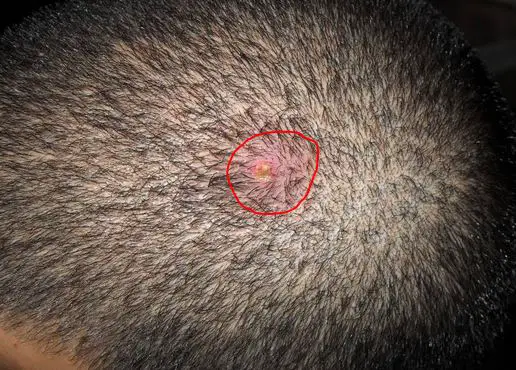
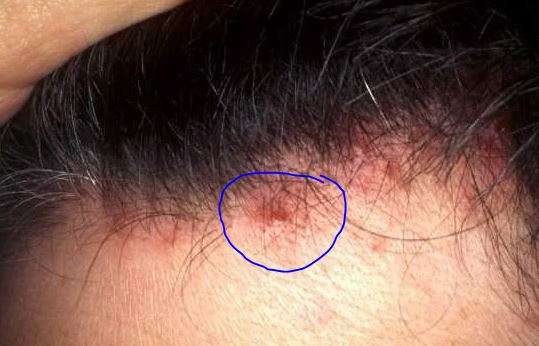
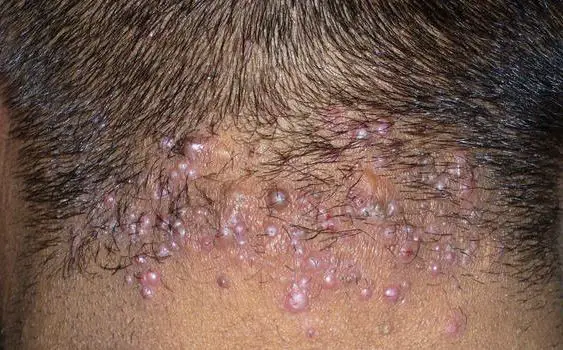
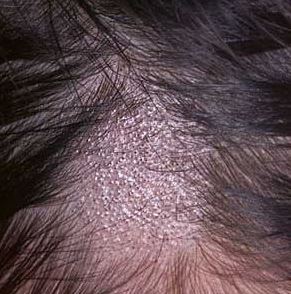


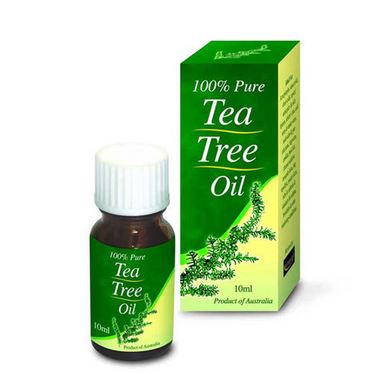
11 comments
Thanks a lot for this article, I will make sure of taking the remedies
Hi Guys. If anyone is suffering from itchy scalp pimples and a sore/tender scalp that bleeds, listen up!! If you’ve tried everything from anti-biotics, lotions and potions and NOTHING WORKED!…THERE IS A SIMPLE SOLUTION, I PROMISE YOU. I am 27 years old and I’ve been suffering from this condition for over 5 years and I’ve finally got the solution that actually WORKS!
STEP 1. STOP USING ANY SHAMPOO/CONDITIONER WHEN YOU SHOWER. PERIOD! (I KNOW THIS SOUNDS STRANGE BUT TRUST ME)
STEP 2. GET A SMALL SPRAY BOTTLE. FILL HALF OF IT WITH APPLE CIDER VINEGAR AND THE OTHER HALF WITH WATER.
STEP 3. WHEN YOU WAKE UP IN THE MORNING. SPRAY THIS ALL OVER YOUR HEAD. A GOOD AMOUNT TILL YOUR HEAD IS SOMEWHAT WET. TAKE YOUR FINGERS AND RUB IT IN ALL OVER YOUR HEAD. LEAVE IT IN THERE FOR 30 MINS.
STEP 4. WASH YOUR HEAD WITH WATER AND WATER ONLY (NOTHING ELSE)
STEP 5. REPEAT EVERYDAY (REMEMBER NO SHAMPOO OR ANY CONDITIONERS AT ALL)
STEP 6. AFTER 2 WEEKS OF DOING THIS. GET THE “TheraNeem® Scalp Therapé Shampoo” AND SHAMPOO YOUR SCALP WITH THAT FOR 5-10 MINS. FINALLY RINSE AND DRY.
STEP 7. REPEAT STEPS 1-6 (ALSO DON’T WORRY TOO MUCH ABOUT THE “BAD” VINEGAR SMELL. IT GOES AWAY.)
SO BASICALLY KEEP REPEATING THIS CYCLE AND YOUR SCALP WILL BE BETTER IN NO TIME. NO MORE ITCHY, PIMPLE, SORE SCALP.
I HAVE TRIED ABSOLUTELY EVERYTHING AND NOTHING WORKED EXCEPT FOR THIS. MY HEAD/SCALP FEELS NORMAL AGAIN. THE APPLE CIDER VINEGAR BALANCES YOUR SCALP pH LEVELS AND STOPS PRODUCING EXCESS SEBUM WHICH MAKES YOUR SCALP OILY AND CLOGS YOUR PORES CAUSING PIMPLES AND ZITS.
GOODLUCK GUYS. LET ME KNOW HOW IT WORKS FOR YOU!
Thank you very much for your contribution. For people who exercise a lot, and sweat in the process, their scalp pores can get clogged easily. The apple cider vinegar remedy is good for preventing scalp breakouts and even getting rid of pimples already present.
Thanks…this has been bothering me for two years…finally a solution that works….thanks again. :)
Hello, I’m going to give this a try. I’ve also have been exp. Hair loss and thinning on top, getting a little nerves. I’m over 50, and have had the wonderful exp. of menopause…lol. Again I will try this and I will let you know the out come. Thanks
Thank you for the article, an itchy scalp is quite maddening.
and I got the cure, thank you. This has helped quite a bit. Theraneem shampoo was a great suggestion also. The medicated shampoos did not help, the antibiotics helped for a bit, cannot live on those. Antibiotics did not help the candida, which is probably largely the cause. Apple cider vinegar (with the mother) works great.
Hi! Where can you get Thereneem Shampoo, and is that Neem oil in shampoo
I hope! It’s work.
I am 42 yrs old and spontaneously these lumps on on my head appeared very quickly. I woke up had my coffee watching a movie nothing out of the norm and I feel these lumps on my head then another then another I’m like shut the front door this can’t be happening and their painful, hard and won’t busy no sign of discharge can someone explain what this is please? Thank you sincerely
Hi,
I have a couple questions for you – I have been reading castor oil is great for hair thinning/hair growth. If you google castor oil for hair growth, you’ll come across many sites raving about this oil. I was wondering if you have ever tried it? If so, did it help?
How can I treat bumps on my back head? The bumps are increasing everyday by day. I need help to get it taken care please